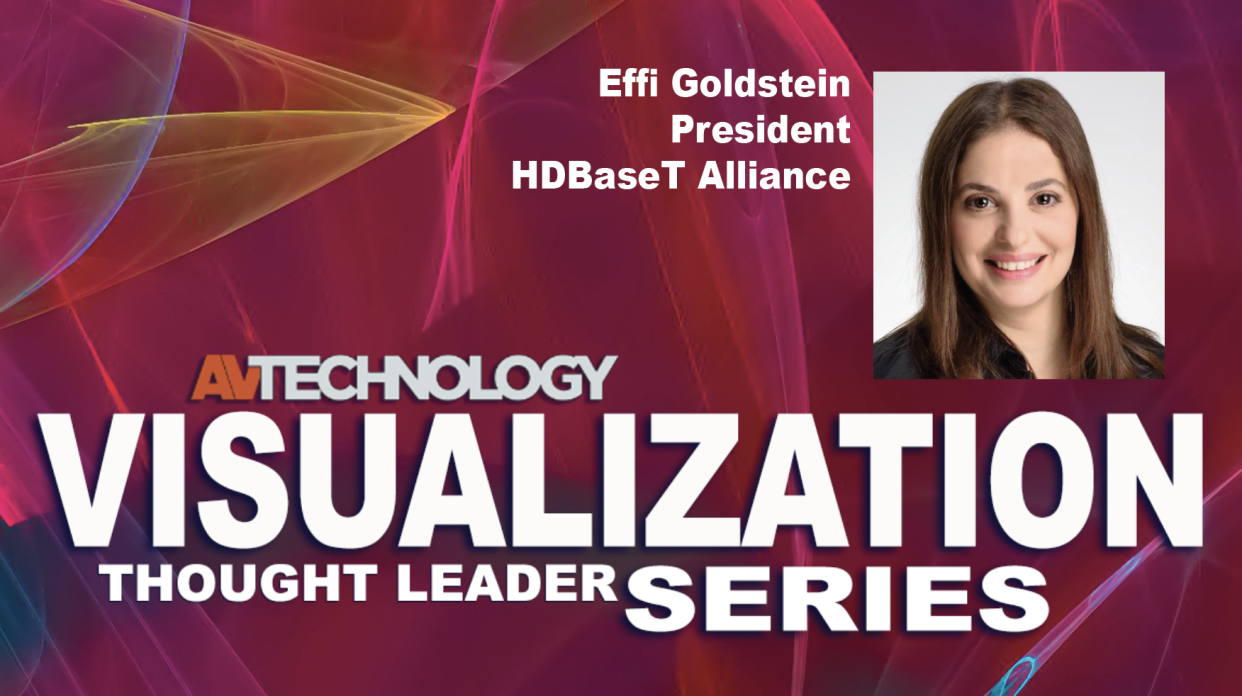On Visualization Technologies: HDBaseT Alliance

AVT Question: Please share insight into display technology trends, new form factors, and applications.
Thought Leader: Effi Goldstein, President at HDBaseT Alliance
When it comes to digital display purchases, perhaps the primary factor AV/IT managers should take into consideration is the quality and performance of the visual content that’s planning to be presented. Of these, one of the most important aspects is resolution, especially as displays continue to get bigger in screen size. Furthermore, as DOOH becomes more immersive, higher resolutions without compression are needed to avoid pixelation or other artifacts that can diminish the viewing experience. However, with these higher resolutions also comes greater bandwidth and data transfer rate requirements, which can pose significant challenges for long-distance extension of the media from its originating source. In such cases, HDBaseT 3.0’s ability to transmit fully uncompressed 4K@60Hz 4:4:4 up to 328 feet (100m) over Category cable provides the ideal solution, and one that can even be daisy chained over and over without sacrificing signal quality.
With higher resolutions also comes greater bandwidth and data transfer rate requirements, which can pose significant challenges for long-distance extension of the media from its originating source" —Effi Goldstein, President at HDBaseT Alliance
Additionally, with standards and formats evolving so rapidly, AV/IT managers should also seek to implement solutions for future proofing their digital display installations with flexibility. One such way is through modular interface cards, such as those based on Intel’s Smart Display Module (SDM) platform. These cards are easily interchanged to provide displays with various functionalities and interfaces, including HDBaseT 3.0, and their small form factors make them compatible with even modern slim-profile screens. As a result, existing hardware can continue to be leveraged over time rather than be replaced as the system is continually upgraded. Not only does this translate into financial savings due to potential longer equipment lifespans, but also less e-waste finding its way into our landfills. In other words, green benefits on multiple fronts!

